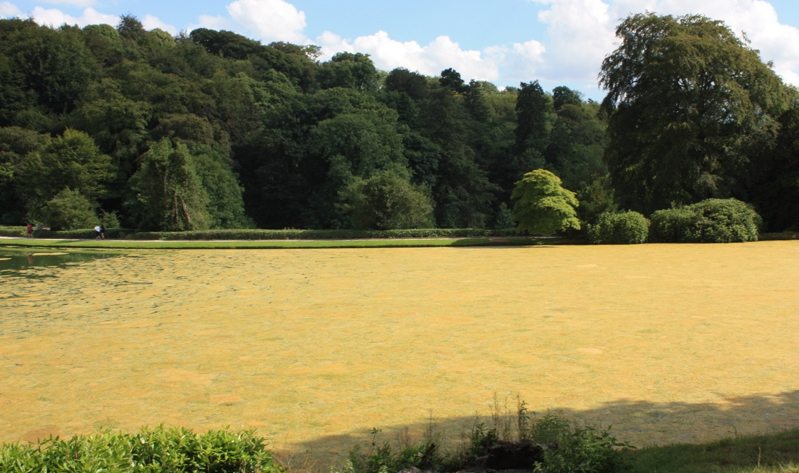The impact of phosphate in watercourses
Home > Sources
 |
The headwaters of the River Stour in Wiltshire. This is not a field but main lake in the National Trust garden at Stourhead, covered in blanket algae in July 2018. The lake is fed by phosphate-rich water from springs It is noteworthy that although this lake is the fourth of a sequence of five lakes, it is the only one to experience this level of algal bloom. |
|---|---|
Nutrient pollution Some algal blooms are harmful to humans because they produce elevated toxins and bacterial growth that can make people sick if they come into contact with polluted water, consume tainted fish or shellfish, or drink contaminated water. |
Issues Phosphate pollution from sewage effluent Phosphate run-off from agriculture. |
Phosphate is a 'limiting nutrient' |
|
Sources of phosphate in the Somerset waterways Phosphate is everywhere. It is an essential component of all living things. Its like oxygen in the air; we could not survive without it but if there is too much or too little, it creates problems. One source of phosphate is all our ta water. It is added to stop iron pipes corroding and to stop lead in lead pipes getting into the water. It is very effective at both these and so not much is added. Even so, the concentration is greater than in most of our streams and rivers. Excess phosphate in Somerset waterways comes from two sources, sewage and agriculture. The phosphate in sewage comes mainly from human urine–about 2kg per person per year, and also from detergents where it is added as a water softener and from tap-water to which it is added to prevent corrosion of old cast iron and lead pipes. Some of our sewage treatment plants remove soluble phosphate but many (including Martock, Souh Petherton and Kingsbury Episcopi, do not. All animals excrete the phosphate they do not need in their urine. We excrete about 2kg per year, a cow in milk can excrete 20kg. We are told that Somerset has as many cows as people. The Somerset dairy industry is therefore a significant source or phosphate both from artifcial phosphate in agricultural chemicals and slurry from dairy herds. Recent guidelines from DEFRA, if followed, largely prevent this from contaminating watercourses significantly and serious pollution results only when these guidelines are breached. Both of these sources of phosphate have been steadily increasing over decades and particularly in recent years. The links top right give more information on these sources locally. |
Phosphate in my home (bad and poor refer to the EA classification of phosphate levels in water - see experimental pages) |
|
|
. |
|
|